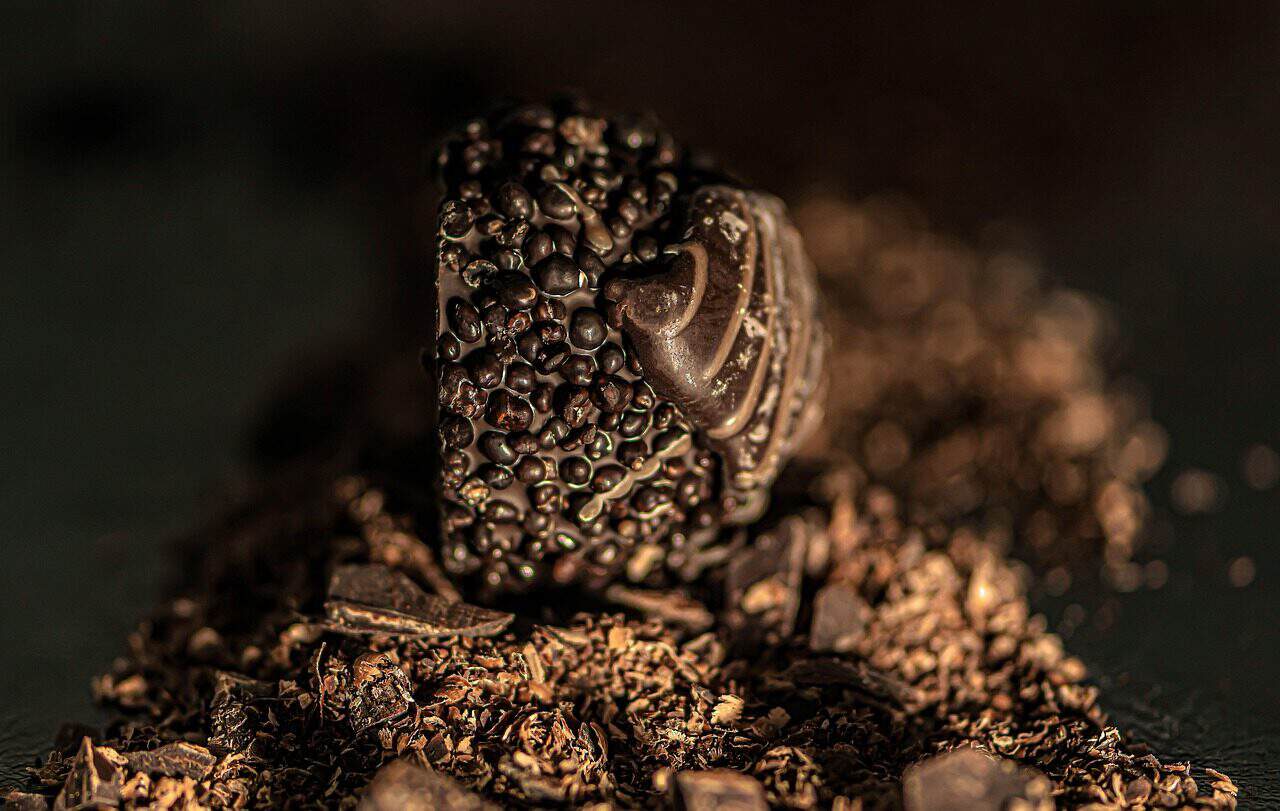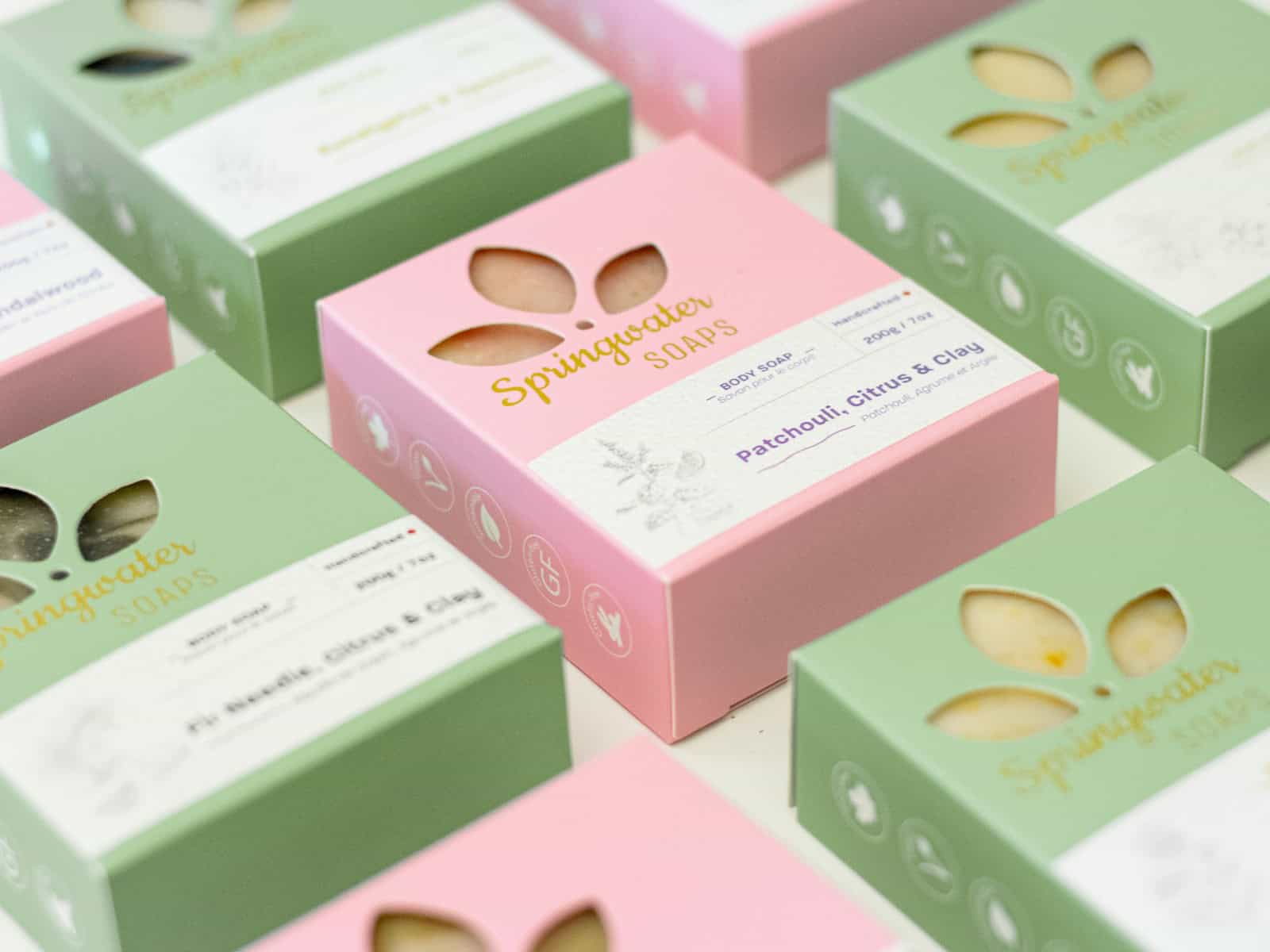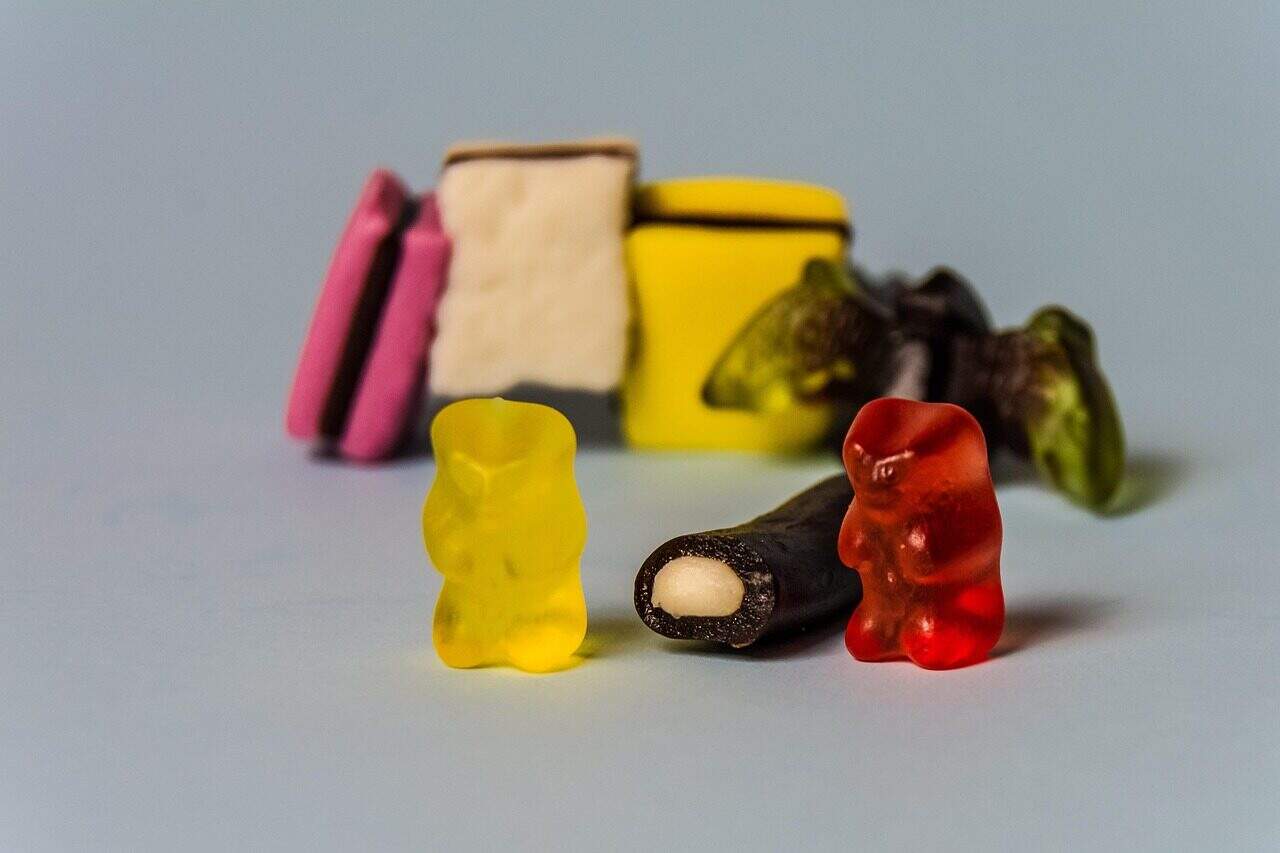Le guide complet sur La fabrication des bonbons: Des ingrédients au processus
Introduction au monde des confiseurs
La confiserie est un art qui consiste à préparer divers bonbons, tels que les bonbons durs, les chocolats et les bonbons mous, à l'aide de sucre, de sirop de maïs et d'autres ingrédients. La confiserie fait référence à la catégorie plus large des aliments sucrés, y compris les bonbons, les chocolats et autres friandises à base de sucre.
Les fabricants de bonbons utilisent une combinaison de sucre, d'eau et d'arômes pour créer des textures et des goûts différents. Avant de commencer le processus de fabrication des bonbons, les ingrédients et l'équipement doivent être correctement préparés pour garantir la qualité et l'uniformité.
Le processus de fabrication des bonbons exige de la précision et de la patience, car de petites variations de température et de proportion d'ingrédients peuvent affecter la texture et la saveur finales des bonbons. Certains fabricants de bonbons produisent des bonbons en petites quantités afin de préserver la qualité et le savoir-faire artisanal.
Les fabricants de bonbons doivent également tenir compte du rôle des cristaux de sucre dans le processus de fabrication des bonbons, car ils peuvent affecter la texture et l'aspect du produit final. L'utilisation d'huiles essentielles et d'autres arômes peut également améliorer le goût et l'attrait des bonbons.
Alors que la fabrication artisanale de bonbons a souvent lieu dans de petites cuisines ou des ateliers, la production à grande échelle a lieu dans une usine de bonbons, où l'environnement, l'équipement et l'échelle diffèrent considérablement.
Les gens aiment manger des bonbons en raison de leurs saveurs attrayantes, de leurs textures uniques et du plaisir sensoriel qu'ils procurent.
Ingrédients et matériaux utilisés dans la production de bonbons
La fabrication des bonbons commence par une sélection minutieuse des ingrédients et des matériaux qui façonnent la texture et la saveur finales de chaque friandise. Le sucre cristallisé est à la base de la plupart des bonbons, apportant la structure et la douceur qui définissent les confiseries. Du sirop de maïs est souvent ajouté au mélange pour empêcher la formation de cristaux de sucre indésirables et garantir une finition lisse et brillante. Les fabricants de bonbons peuvent également utiliser du miel, de la mélasse ou d'autres sirops pour créer des saveurs et des textures uniques dans leurs bonbons.
Pour améliorer le goût et l'apparence, des huiles essentielles et des colorants alimentaires sont couramment utilisés, ce qui permet aux fabricants de bonbons de créer des bonbons vibrants et accrocheurs avec des saveurs distinctives. Les fruits à coque, les fruits et les épices sont souvent incorporés dans le processus de fabrication des bonbons, ce qui permet d'ajouter des couches de texture et de complexité au produit final. Le choix de ces ingrédients est crucial, car des matériaux de haute qualité peuvent faire une différence significative dans le résultat du bonbon.
Tout au long du processus de fabrication des bonbons, le comportement des cristaux de sucre est étroitement surveillé, car leur formation peut avoir un impact sur l'onctuosité et l'aspect des bonbons finis. En comprenant comment chaque ingrédient interagit pendant le mélange, l'ébullition et le refroidissement, les fabricants de bonbons sont en mesure de créer une grande variété de bonbons, des caramels moelleux aux bonbons durs croustillants, chacun ayant une texture et un profil de saveur uniques.
Comprendre le processus de fabrication des bonbons

Pour fabriquer des bonbons, il faut faire bouillir une solution sucrée en utilisant tout le sucre pour obtenir une texture et une consistance adéquates. Le sucre bouilli constitue la base de nombreux bonbons, et une ébullition précise est cruciale pour éviter la cristallisation et obtenir la bonne concentration de sirop.
Au cours du processus, il est essentiel d'atteindre un point spécifique - par exemple une température ou un stade cible - pour obtenir la texture souhaitée du bonbon. Les bonbons durs doivent être bouillis à des températures plus élevées, environ 160 °C, ce qui entraîne la décomposition des molécules de saccharose et la formation de caramel, d'où une texture rigide et cassante. Les bonbons plus tendres sont bouillis à des températures plus basses, ce qui leur donne une consistance différente. Après l'ébullition, il est important de laisser refroidir le sirop ; la façon dont le sirop refroidit et est refroidi détermine la texture finale, et le contrôle de l'environnement froid est essentiel. L'eau froide est souvent utilisée pour tester l'état du sirop ou pour refroidir rapidement le bonbon.
Lorsque le mélange est prêt, les confiseurs le versent dans des moules ou sur des surfaces pour le façonner. Tous les ingrédients doivent être soigneusement mélangés pour garantir une texture et une saveur homogènes dans tout le lot. Le glucose et l'acide citrique sont couramment ajoutés pour contrôler la cristallisation et ajuster le goût sucré, tandis que la crème (comme la crème de tartre) est utilisée pour influencer les propriétés du sucre. Les méthodes traditionnelles de fabrication des bonbons diffèrent des techniques modernes, car elles reposent souvent sur des ingrédients naturels et des tests manuels.
Le caramel, le fudge, le beurre et le lait sont des ingrédients clés dans certains bonbons, chacun contribuant à la texture, à la saveur et à la sensation en bouche - le caramel donne une consistance plastique et moelleuse, le fudge est connu pour sa texture crémeuse, le beurre apporte de la richesse et le lait est essentiel dans les confiseries telles que le caramel et le nougat. Pendant le stockage, les bonbons peuvent coller les uns aux autres ou aux surfaces, c'est pourquoi des mesures sont prises pour les empêcher de coller, par exemple en les saupoudrant de sucre ou en les enveloppant.
Arômes et couleurs sont souvent ajoutés sous forme liquide pour une distribution uniforme, ce qui donne des bonbons aromatisés. Des extraits ou des morceaux de fruits sont couramment utilisés pour rehausser le goût, en particulier dans les recettes traditionnelles. Le chocolat liquide est utilisé pour le moulage et l'enrobage des confiseries, ce qui permet d'obtenir une grande variété de formes et de finitions.
Le processus de fabrication des bonbons implique également l'utilisation de moules à bonbons pour donner aux bonbons la forme souhaitée. Les fabricants de bonbons doivent également tenir compte de l'importance du contrôle de la température et de l'humidité dans le processus de fabrication des bonbons. L'utilisation de moules en métal et d'autres équipements peut également affecter la forme et la texture finales des bonbons.
L'art de créer des bonbons durs
La création de bonbons durs est une véritable démonstration de la science sucrée qui se cache derrière la fabrication des bonbons. Les fabricants de bonbons commencent par combiner du sucre, de l'eau et du sirop de maïs, puis font chauffer le mélange à des températures élevées, généralement entre 300 et 310°F. Ce processus d'ébullition du sucre transforme le mélange en une solution de sucre sursaturée, ce qui est essentiel pour obtenir la texture de verre caractéristique des bonbons durs.
Lorsque le sirop atteint le stade de la boule ferme, vers 250°F, les confiseurs surveillent attentivement la température pour s'assurer que la texture finale est parfaite. Si le mélange n'est pas assez chauffé, le bonbon risque d'être collant ou mou ; s'il est surchauffé, il peut devenir cassant ou présenter des arêtes vives. Une fois la température souhaitée atteinte, le sirop chaud est versé sur des surfaces de refroidissement ou dans des moules à bonbons, où il est façonné dans des formes classiques comme les sucres d'orge ou les gouttes de citron.
Le contrôle du processus de refroidissement est tout aussi important que l'ébullition, car il empêche la formation de cristaux de sucre indésirables et garantit une finition lisse et brillante. En maîtrisant l'équilibre entre la température, le temps et la technique, les fabricants de bonbons sont en mesure de créer des bonbons durs qui sont à la fois beaux et délicieux, avec un croquant satisfaisant et une saveur vibrante.
L'importance des moules à bonbons pour façonner les bonbons
- Les moules à bonbons sont utilisés pour donner aux bonbons la forme souhaitée et peuvent être fabriqués à partir de divers matériaux, notamment le métal et le plastique.
- Les fabricants de bonbons utilisent des moules à bonbons pour créer des bonbons de formes et de tailles spécifiques, notamment des cannes de sucre d'orge et du maïs d'orge.
- L'utilisation de moules à bonbons peut également affecter la texture et l'aspect final des bonbons.
- Les moules à bonbons peuvent être utilisés pour créer des bonbons avec des dessins et des motifs complexes.
- L'utilisation de moules à bonbons est un élément essentiel du processus de fabrication des bonbons, car elle permet aux fabricants de bonbons de créer des bonbons de formes et de tailles spécifiques.
Une brève histoire de la La fabrication des bonbons
- La fabrication de bonbons a une longue histoire, qui remonte à l'Égypte ancienne, où les bonbons étaient fabriqués à partir de miel et d'autres ingrédients.
- Le Moyen Âge a vu le développement de nouvelles techniques de fabrication de bonbons, notamment l'utilisation du sucre et d'autres ingrédients.
- La révolution industrielle a vu le développement de nouveaux équipements et de nouvelles techniques, notamment l'utilisation de moules en métal et d'autres machines.
- Aujourd'hui, la fabrication de bonbons est une industrie mondiale, les fabricants utilisant une grande variété d'ingrédients et de techniques pour créer des bonbons aux textures et aux saveurs différentes.
- L'histoire de la fabrication des bonbons est riche et complexe, de nombreuses cultures et civilisations différentes ayant contribué au développement des techniques de fabrication des bonbons.
Le rôle de la température et de l'humidité dans la fabrication des bonbons
- Le contrôle de la température et de l'humidité est essentiel dans le processus de fabrication des bonbons, car il peut affecter la texture et la saveur des bonbons.
- Les fabricants de bonbons doivent tenir compte de l'importance du contrôle de la température lorsqu'ils font bouillir le sucre et d'autres ingrédients.
- Le contrôle de l'humidité peut également affecter la texture et l'aspect final des bonbons.
- Les fabricants de bonbons doivent également tenir compte du rôle de la température et de l'humidité dans le processus de cristallisation, car elles peuvent affecter la texture et l'aspect du produit final.
- Le contrôle de la température et de l'humidité peut également améliorer la qualité et la consistance des bonbons.
L'industrie de la confiserie aujourd'hui
Aujourd'hui, l'industrie de la confiserie est un mélange dynamique de tradition et d'innovation. Les fabricants de bonbons modernes utilisent diverses techniques, depuis les méthodes classiques de cuisson du sucre et de coulage à la main jusqu'aux machines de pointe et aux processus automatisés. Cela permet de créer une large gamme de bonbons, des bonbons durs nostalgiques aux friandises inventives enrobées de chocolat, en passant par les gommes acidulées.
L'industrie a également réagi à l'évolution des préférences des consommateurs en introduisant des bonbons contenant des ingrédients naturels et une teneur réduite en sucre, ce qui a séduit les clients soucieux de leur santé. L'essor des achats en ligne et des médias sociaux a transformé la manière dont les fabricants de bonbons communiquent avec leur public, facilitant la présentation de nouveaux produits et permettant d'atteindre les amateurs de bonbons du monde entier.
Malgré ces progrès, de nombreux fabricants de bonbons s'appuient encore sur des méthodes traditionnelles, telles que l'ébullition du sucre et le façonnage des bonbons à la main, pour garantir une qualité optimale. Le processus de fabrication des bonbons reste un savant équilibre entre l'art et la science, les confiseurs expérimentant de nouvelles saveurs, textures et techniques pour créer des bonbons qui ravissent et surprennent.
Défis communs aux fabricants de bonbons
- Les fabricants de bonbons sont confrontés à toute une série de défis, notamment la nécessité de contrôler la température et l'humidité dans le processus de fabrication des bonbons.
- L'utilisation de nouveaux ingrédients et de nouvelles techniques peut également poser des problèmes, notamment la nécessité de garantir la sécurité alimentaire et le contrôle de la qualité.
- Les fabricants de bonbons doivent également tenir compte de l'importance de l'entretien et de la réparation des équipements, car un équipement défectueux peut affecter la qualité et la consistance des bonbons.
- L'utilisation de moules métalliques et d'autres équipements peut également poser des problèmes, notamment la nécessité de veiller à ce qu'ils soient correctement nettoyés et entretenus.
- Les fabricants de bonbons doivent également tenir compte du rôle du sucre et d'autres ingrédients dans le processus de fabrication des bonbons, car ils peuvent affecter la texture et la saveur des bonbons.
Conclusion sur le processus de fabrication des bonbons
En résumé, la fabrication de bonbons est un mélange fascinant de créativité, de science et d'habileté. De la sélection des meilleurs ingrédients à la maîtrise du processus de fabrication des bonbons, les fabricants de bonbons doivent prêter attention à chaque détail pour produire des bonbons de haute qualité. Qu'il s'agisse de fabriquer des bonbons durs, des bonbons mous ou des chocolats de luxe, il faut comprendre ce qu'est la fabrication de bonbons. la science douce Il est essentiel de ne pas perdre de vue le sucre, la température et les autres ingrédients.
Le processus de fabrication des bonbons implique un contrôle précis du mélange, de l'ébullition, du refroidissement et de la mise en forme, chaque étape contribuant à la texture et à la saveur finales. En combinant les techniques traditionnelles et les innovations modernes, les fabricants de bonbons continuent de créer une gamme variée de sucreries qui font la joie des personnes de tous âges. Le monde de la confiserie est aussi riche et varié que les bonbons eux-mêmes, offrant des possibilités infinies de créativité et de plaisir.
L'avenir de la confiserie
L'avenir de la confiserie promet encore plus d'innovation et d'enthousiasme. À mesure que la technologie progresse, les fabricants de bonbons explorent de nouvelles façons d'utiliser des ingrédients naturels et de réduire la teneur en sucre, répondant ainsi à la demande croissante de bonbons plus sains. L'utilisation d'épices, d'herbes et d'autres ingrédients uniques ouvre de nouvelles possibilités de saveurs, permettant aux fabricants de bonbons de créer des bonbons qui surprennent et ravissent le palais.
Les plateformes en ligne et les médias sociaux continueront à jouer un rôle majeur, aidant les fabricants de bonbons à toucher un public plus large et à partager instantanément leurs dernières créations. À mesure que les préférences des consommateurs évolueront, l'industrie s'adaptera en expérimentant de nouvelles textures, formes et combinaisons de saveurs, afin que les bonbons restent une friandise appréciée des générations à venir.
En adoptant de nouvelles tendances et techniques, les fabricants de bonbons continueront à repousser les limites de ce qui est possible avec le sucre, le sirop de maïs et d'autres ingrédients. Le secteur de la confiserie est appelé à prospérer, offrant des possibilités infinies de créativité et d'innovation dans la quête de la friandise parfaite.









